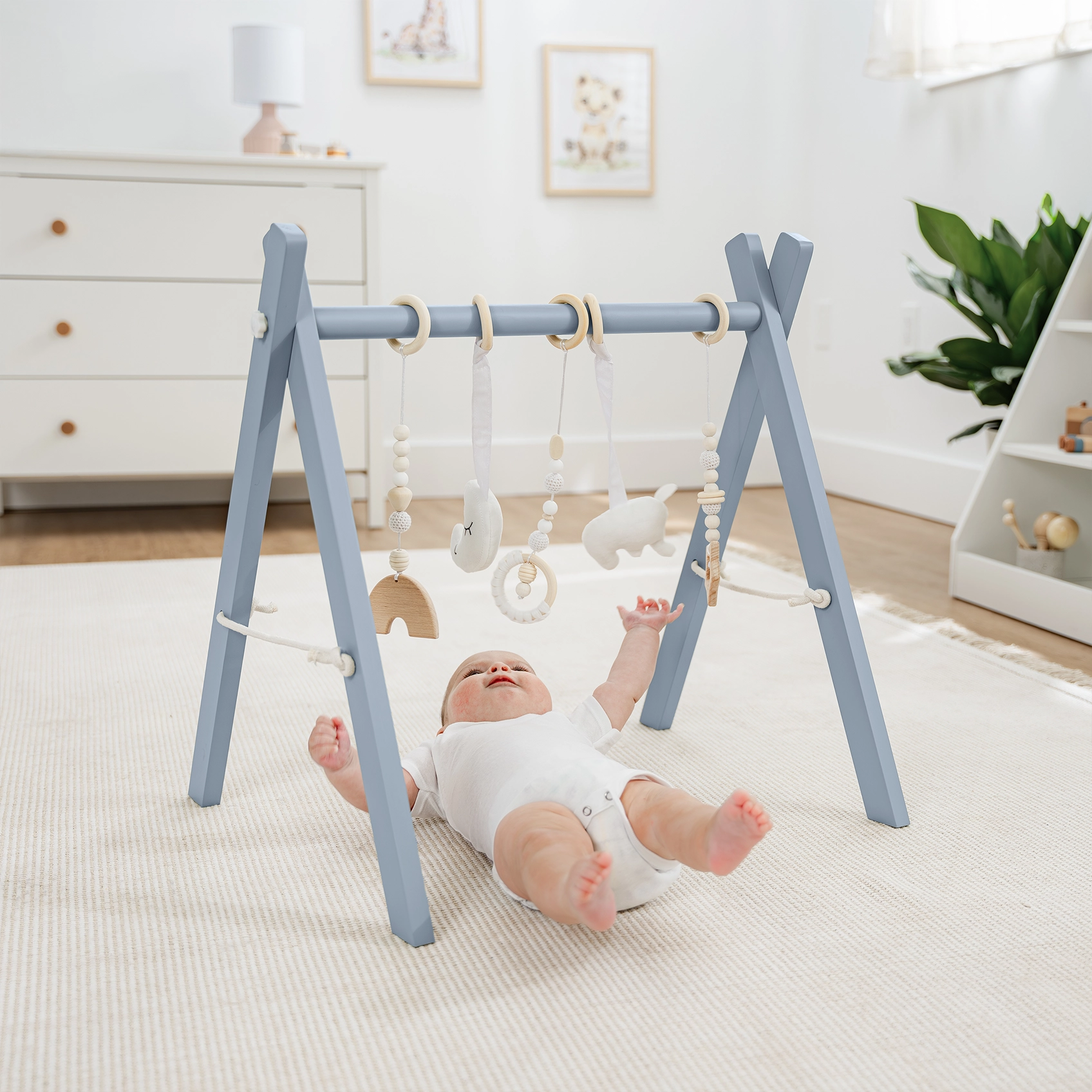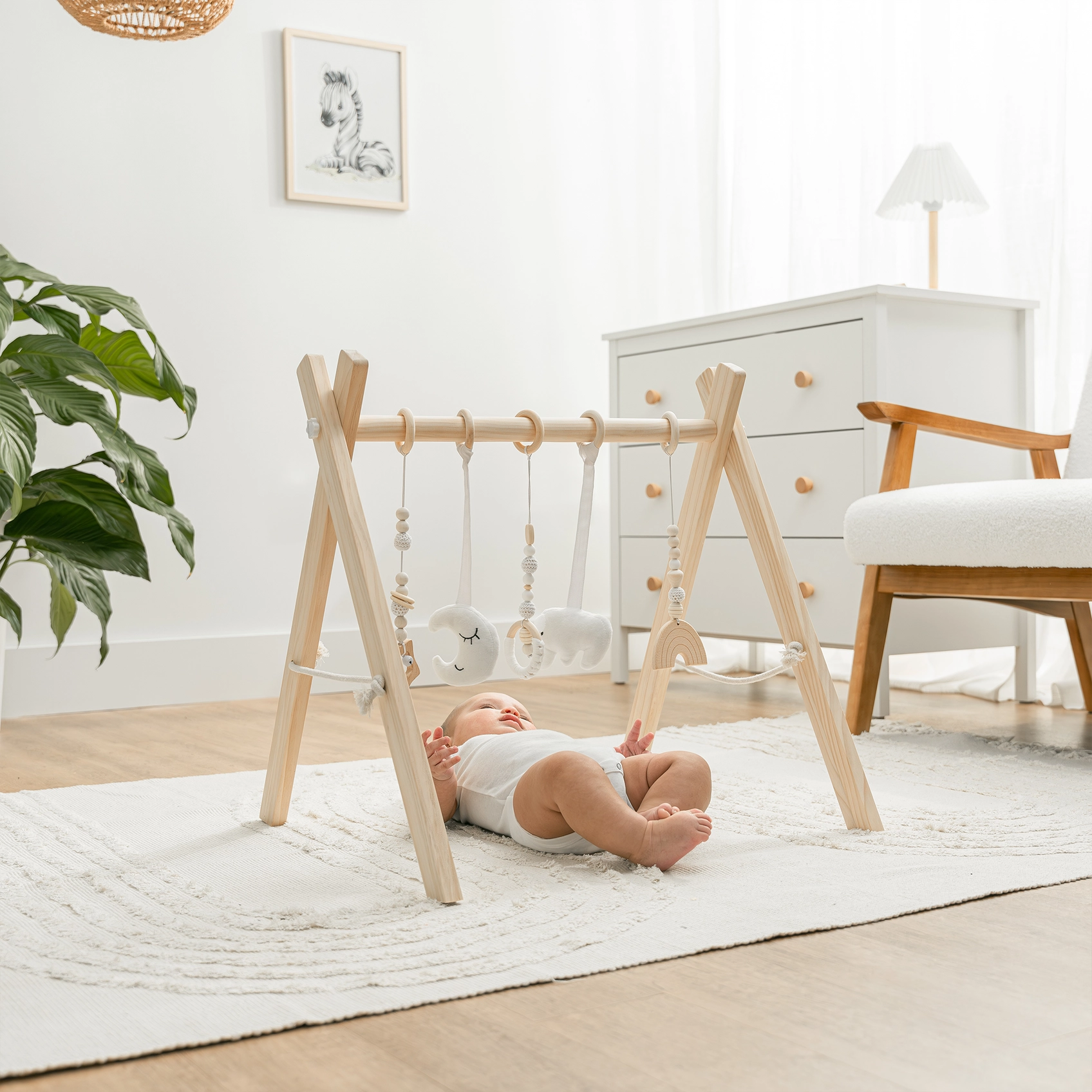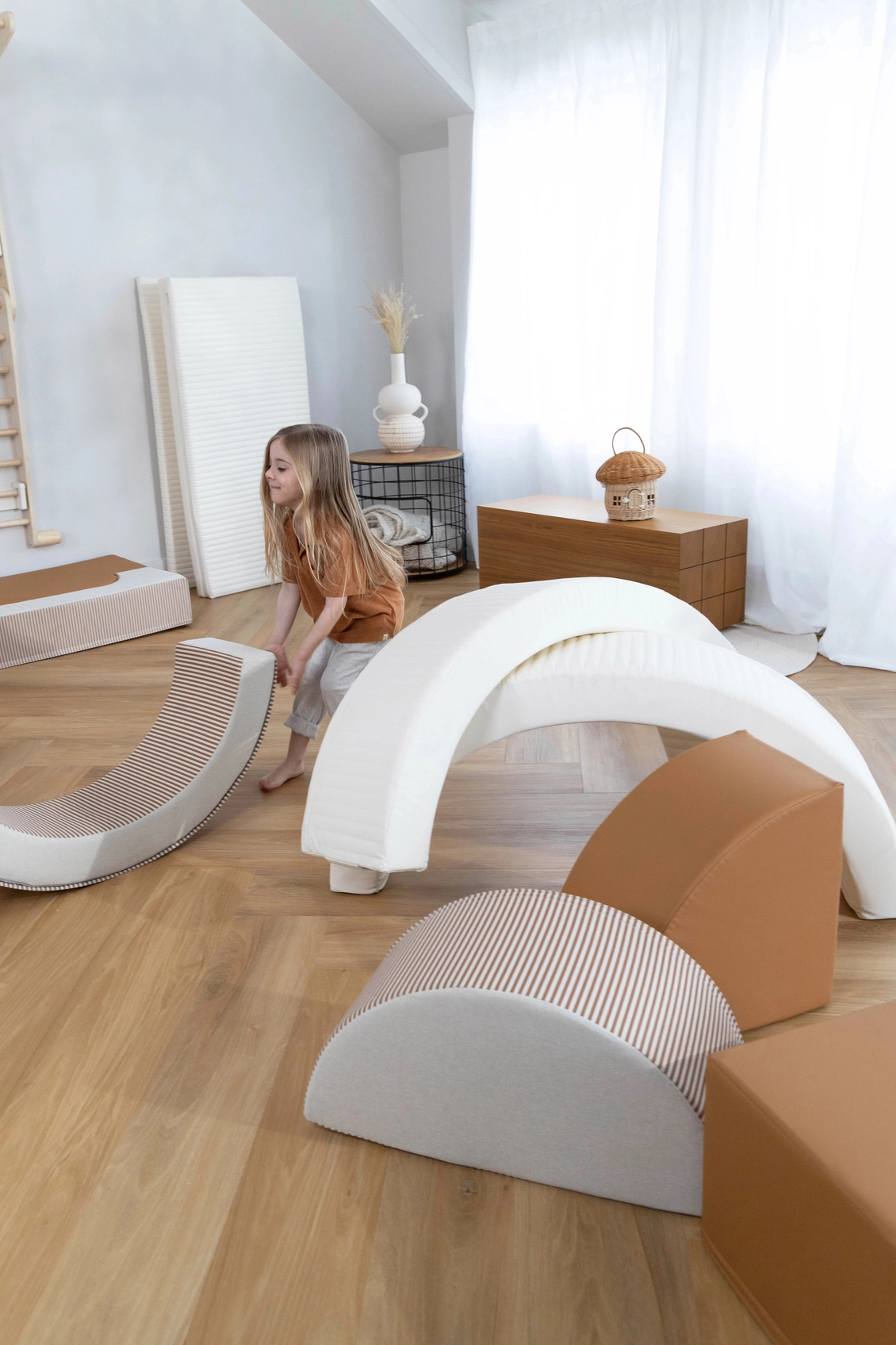Gross Motor Development Through Play
- LeCha Brown

- Feb 23
- 3 min read
Updated: Feb 24
Gross motor development refers to the growth of large muscle groups that enable movement, coordination, and physical activity. From infancy to toddlerhood, children develop essential motor skills through exploration and play. By providing age-appropriate toys and engaging in physical activities, caregivers can support gross motor development in a fun and natural way.
Gross motor development involves several key elements, including muscle strength, balance, coordination, and endurance. These elements work together to allow our littles to perform fundamental movements such as crawling, walking, jumping, and climbing. Strength helps infants push up during tummy time and later supports walking and running, while balance and coordination enable toddlers to navigate stairs and ride tricycles. As children grow, endurance allows them to engage in sustained physical activities like dancing, running, and playing sports. Each stage of development builds upon the previous one, making early movement experiences essential for developing lifelong physical skills and confidence.
Gross Motor Milestones: Birth to 48 Months
Each stage of early childhood presents new opportunities for physical development. Understanding these milestones can help caregivers select activities and toys that foster growth.
0-6 Months: Building Strength and Control

Begins to lift head while on tummy
Kicks legs and moves arms with increasing coordination
Pushes up on arms during tummy time
Play-Based Activities:
Tummy time with both contrasting and colorful play mats
Soft and/or noisy rattles to encourage reaching and grasping
Gentle baby massage to stimulate muscle awareness
6-12 Months: Exploring Movement

Rolls over in both directions
Sits without support
Begins crawling and pulling up to stand
Play-Based Activities:
Crawling through tunnels or over cushions
Activity tables that encourage pulling up
Balls for rolling and reaching
12-24 Months: First Steps and Coordination

Walks independently
Climbs low furniture and stairs with assistance
Begins to run and throw objects
Play-Based Activities:
Push and pull toys for walking practice
Ride-on toys to promote balance
Stacking blocks to enhance hand-eye coordination
24-36 Months: Strengthening and Refining Skills

Runs with better coordination
Jumps with both feet
Begins to pedal a tricycle
Play-Based Activities:
Obstacle courses using pillows and tunnels
Dancing and movement-based songs
Balls for kicking and throwing practice
36-48 Months: Advanced Motor Skills

Climbs playground structures confidently
Hops on one foot
Catches a large ball with both hands
Play-Based Activities:
Playground play for climbing and swinging
Balance beams or stepping stones
Simple team games like relay races
The Role of Toys in Gross Motor Development
Toys play a crucial role in promoting gross motor development by encouraging our littles to move, explore, and practice essential physical skills. The right toys help strengthen muscles, improve coordination, and build confidence in movement. Below are examples of toys that support gross motor development at different stages:
Infants (0-12 months): Play gyms with hanging toys encourage reaching and grasping, while tummy time mats help develop neck and core strength. Soft balls and textured rattles stimulate early muscle movement and coordination.
Toddlers (12-36 months): Push and pull toys help with balance and walking confidence, while ride-on toys promote leg strength and coordination. Shape sorters and stacking toys support hand-eye coordination and refined motor control.
Preschoolers (36-48 months): Tricycles and balance bikes strengthen leg muscles and improve coordination. Jump ropes and hopscotch mats encourage jumping and endurance, while sports balls foster throwing, kicking, and catching skills.
Additionally, open-ended toys like climbing structures, stepping stones, and obstacle course sets allow our little ones to experiment with movement and develop agility. These toys not only promote physical activity but also enhance problem-solving skills and spatial awareness. By integrating developmentally appropriate toys into daily your daily at home play, you can create an engaging environment that fosters gross motor growth while making movement fun and exciting.
Gross motor development is a foundational aspect of a child’s physical growth and overall well-being. Through play-based learning and thoughtfully chosen activities, you can create opportunities for your child to build strength, coordination, and confidence in their physical abilities. Encouraging movement from infancy through toddlerhood sets the stage for a lifetime of active play and healthy development.












Comments